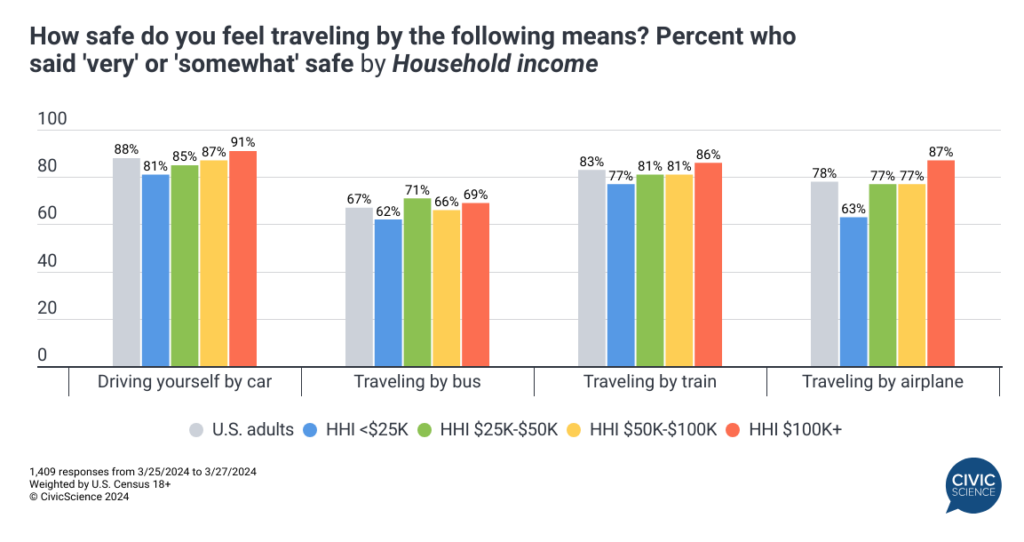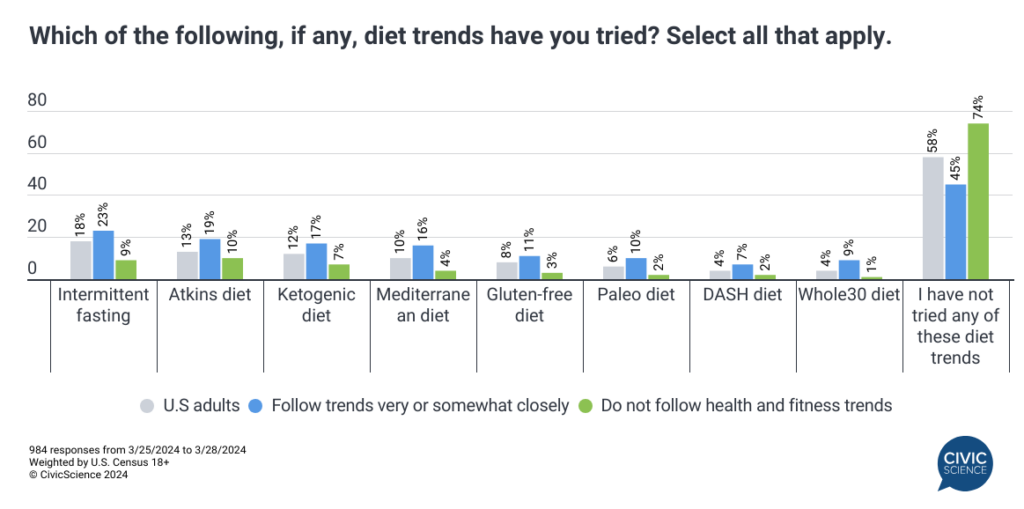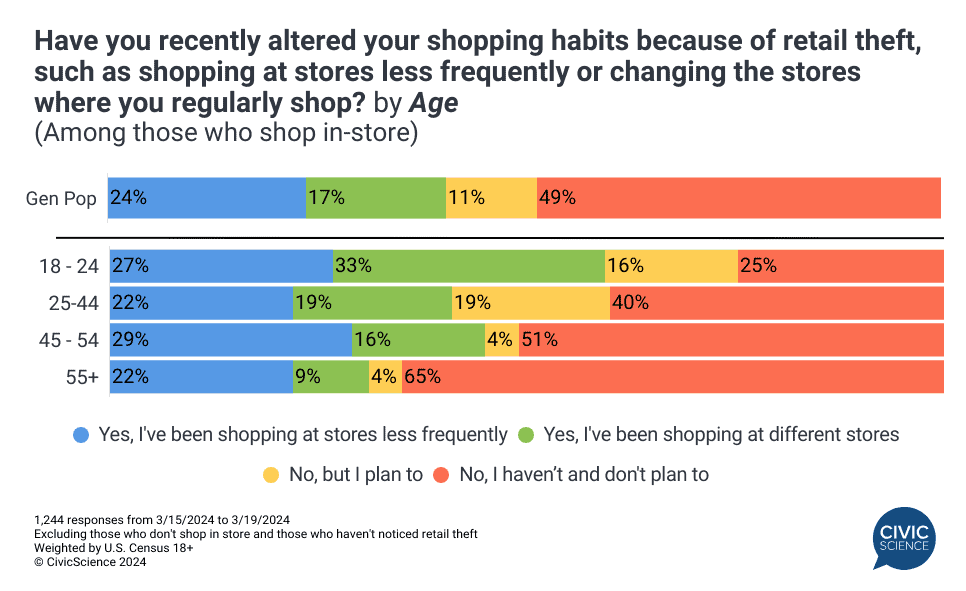CivicScience continually tracks current and anticipated consumer trends. Here are three key insights marketers should know this week. Insights are derived from the CivicScience Social | Political | Economic | Cultural (SPEC) Report, a weekly report available to clients covering the latest news and insights. Start here to learn more.
1. Americans still feel safe when traveling despite recent incidents and disasters.
The United States has been plagued by a series of transportation disasters so far in 2024, from the door blowout on an Alaska Airlines flight in January to the collapse of the Francis Scott Key bridge last week in Baltimore. But despite these incidents and others, most Americans say they still feel safe while traveling.
New CivicScience polling reveals that U.S. adults generally feel safe driving and taking trains, with a majority also feeling safe on planes and buses. Moreover, higher-income individuals exhibit greater confidence in their safety, being 10 percentage points more likely to feel secure while driving and 24 points more likely while flying compared to lower-income households.
Consumer perceptions of travel safety have shifted over the past decade, with widespread agreement on the increased safety of car and train travel. However, opinions vary regarding air and bus travel. Gen Z adults notably believe air travel has seen the most improvement, with a significant 17-point difference from Millennials and a striking 44-point difference from Baby Boomers (n=1,982 from 3/25/2024 to 3/26/2024).

Join the Conversation: How safe would you say you feel when you are driving?
2. Intermittent fasting is a leader among common health and diet trends.
A recent publication by the American Heart Association found a link between time-restricted diets, such as intermittent fasting, and an increased risk of cardiovascular disease. CivicScience polling shows nearly 1-in-5 U.S. adults – and nearly 1-in-4 of those who follow health and fitness trends – say they have tried intermittent fasting for dieting purposes. This makes it the most popular diet trend studied, followed by the Atkins diet and ketogenic diet.

3. Over 2 in 5 have altered how they shop amid retail theft.
Retail theft has become a hot button issue over the past year or so that has led states like California to spend millions of dollars to address. Recently, a bipartisan group of California assembly members unveiled a new bill aimed at tackling the problem, proposing to authorize warrantless arrests by police for misdemeanor shoplifting incidents (those valued at $950 or less) even if they do not witness the theft. However, the extent to which retail crime has actually increased across the U.S. is a topic of debate.
CivicScience data show 83% of consumers who shop in-store have noticed retail theft, though that percentage has fallen by 4 points since September 2023. How much are Americans altering how they shop amid instances of retail theft? Additional data find over 2-in-5 consumers who shop in stores and notice retail theft report they’ve adjusted their shopping habits – whether they’re shopping at stores less often (24%) or shopping at different stores than they usually do (17%). These percentages have held relatively steady since September polling. Gen X is the most likely to shop in-store less frequently, while Gen Z adults are at least 14 points more likely to switch where they shop. Conversely, Boomers are the least likely to have made changes as a result of shoplifting.

Take Our Poll: Do you think the problem of retail theft will ever be solved?
Clients receive the SPEC Report in full, plus access to real-time insights driven by our database of over 500K questions. Contact us now to see it in action.








